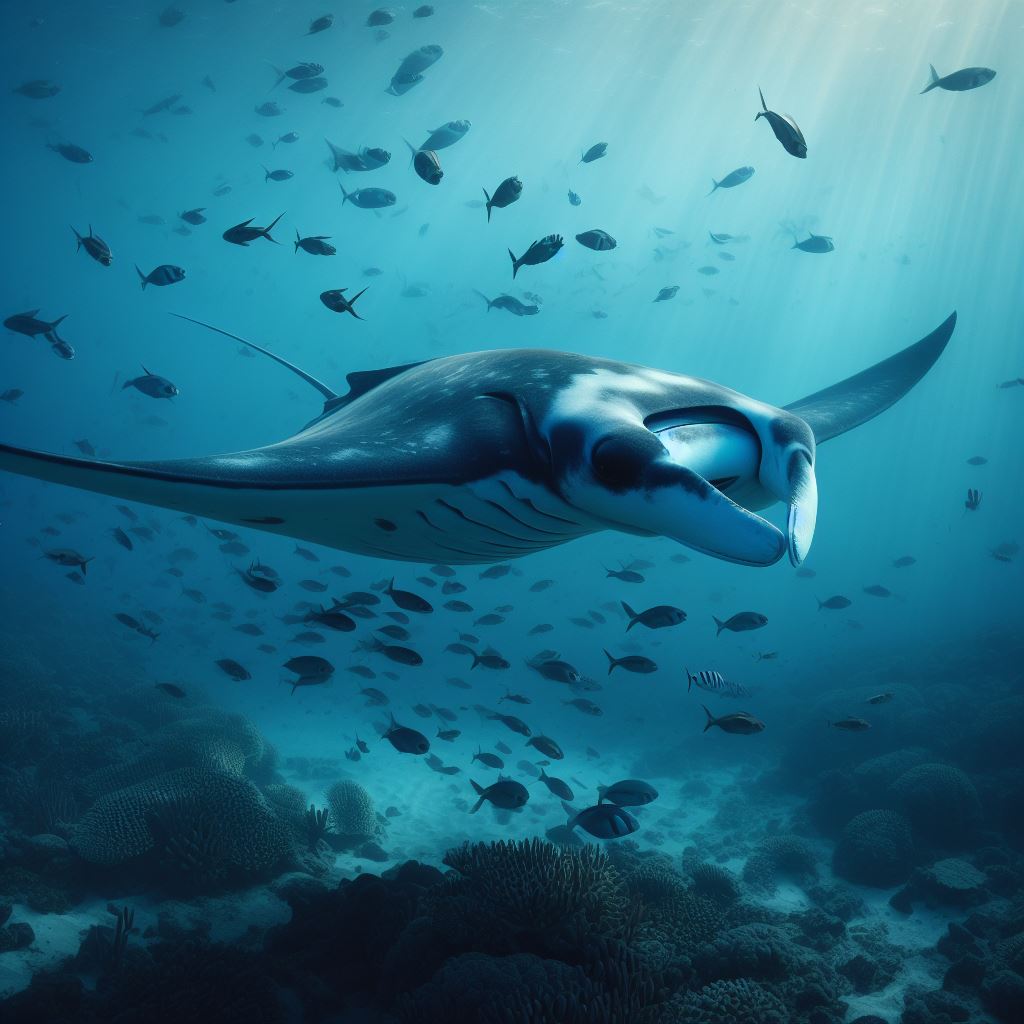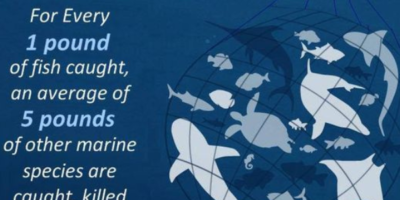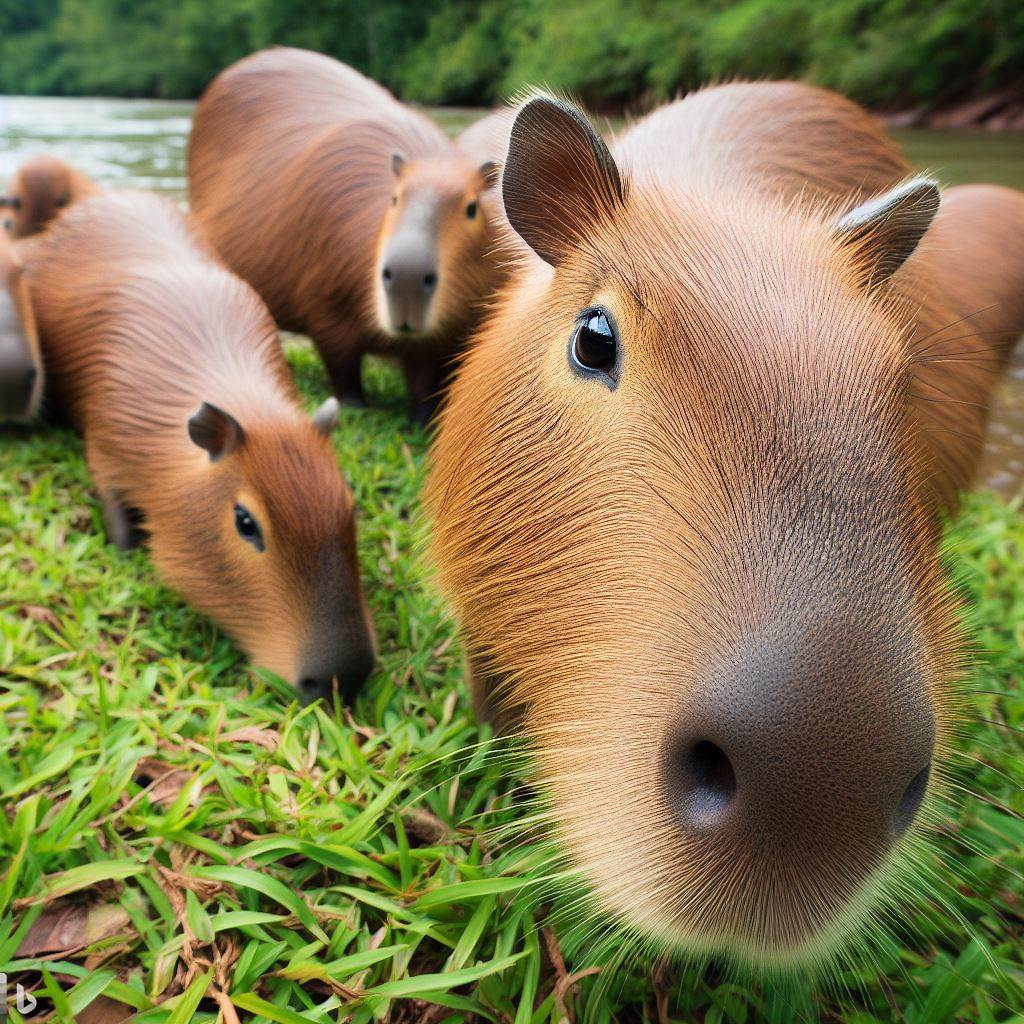Off the coast of tropical and subtropical global waters swim massive, mysterious creatures that have fascinated humans for centuries – the giant manta ray. With wingspans reaching over 20 feet, mantas are the most enormous rays on the planet. Despite their imposing size, these gentle giants glide through the ocean with effortless grace. Though they have been known to seafarers since ancient times, much about them remains unknown. However, recent research has revealed tantalizing new insights into the lives of these captivating animals.
Mantas are closely related to other rays, such as stingrays, with distinctive characteristics that set them apart. Their bodies are flat and wide like a kite, with large, triangular pectoral fins that enable them to swim powerfully through the water. Mantas have horn-shaped cephalic fins on either side of their heads, which they use to funnel plankton and small fish into their wide mouths. They are filter feeders, straining the water for nourishment. Rows of tiny teeth line their mouths to grasp prey, which are then crushed by hardened plates in their throats.
Mantas come in two known species – the reef manta ray and the enormous giant manta ray, or oceanic manta. The giant manta can reach widths of over 20 feet and weighs 3000 pounds. Their backs are typically black or dark in color, with white undersides. Each manta’s pattern of markings is unique, like a human fingerprint. These patterns allow individual mantas to be identified and tracked over time. Mantas are long-lived, with lifespans estimated up to 50 years or more in the wild.
Unlike other rays, manta rays possess large brains and exhibit signs of intelligence. They have been documented recognizing and remembering specific humans even years later. Mantas frequent “cleaning stations” where small fish remove parasites from their skin. They will wait in line and even unroll their cephalic fins for easier access. Such cooperative behavior shows signs of complex thought and communication. Mantas often breach the water, leaping entirely out in graceful somersaults. No one knows precisely why they do this – it may be a mating ritual, play, or just an enjoyable sensation. Whatever their reasons, seeing a 20-foot-wide manta launch itself fully airborne is an awe-inspiring sight.
Though manta rays are frequently found in shallow, coastal waters, little is known about their deep ocean migrations and behavior. Advanced tracking technologies in recent years have helped unlock some of their secrets. One study tagged and tracked mantas in the Pacific Ocean near the Americas for multiple years. The mantas traveled vast distances – one over 12,400 miles in just over 600 days. They regularly dove to depths around 300 meters, seeking feeding grounds, and were capable of dives exceeding 1000 meters. The migratory routes connect manta populations globally, showing how their survival worldwide is interdependent.
Sadly, despite increasing protection, manta rays face severe threats from human activity. In some countries, mantas are still hunted for their meat, skin, and gill rakers. Their slow reproductive rates make overfishing and hunting unsustainable. Mantas are also vulnerable to boat strikes, fishing gear entanglement, and oceanic plastic ingestion. However, promising conservation efforts are underway to preserve these mystical creatures. Indonesia, once the global epicenter of manta hunting, now protects all manta rays in its waters. This sanctuary allows depleted manta populations to recover and boosts eco-tourism opportunities. Manta rays also appear less frequently in Chinese medicine, where their gill rakers were used once every day.
As awareness of manta rays grows globally, there is hope their populations can stabilize and recover. If protected, these gentle ocean leviathans will continue their mesmerizing underwater ballets, bringing wonder to all fortunate enough to encounter them. The next time you find yourself transfixed by the graceful glide of manta wings, remember you are looking upon one of the ocean’s great mysteries. Let its presence inspire awe and a commitment to conserving the many marvels still hidden in the unexplored depths of our world’s waters. The magnificent manta still has much to teach us about our planet and ourselves if we will listen.



